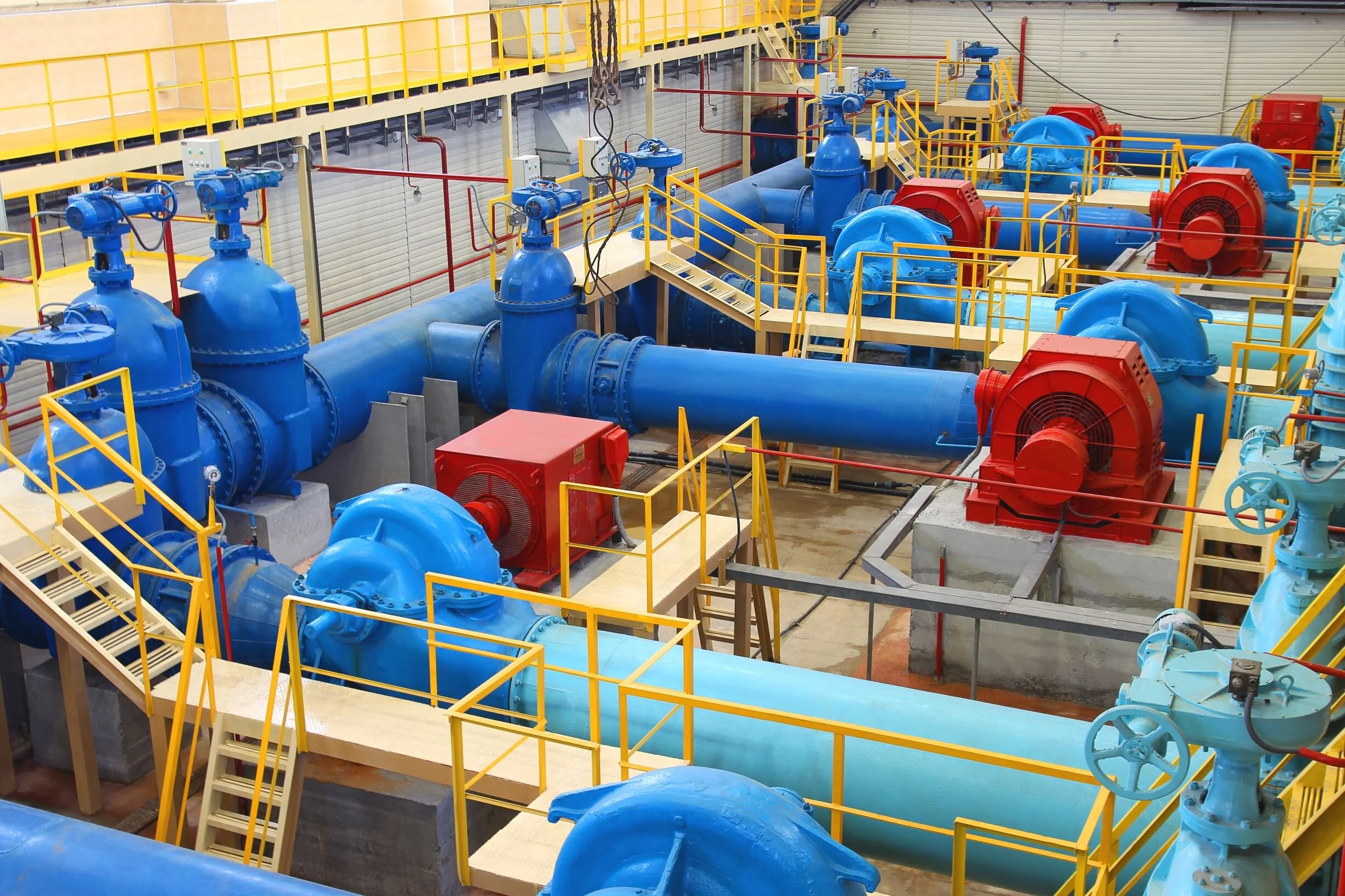How a Properly Established Electrical System Will Ensure the Integrity of Your Potable Water Distribution System
/Water pumping and booster stations are used for pumping potable water from lower elevation areas to higher elevation areas of a distribution system. This energy expenditure is necessary to supply potable water required for homes, businesses, and industries. Water pumps depend on electricity to run, but water pumping stations also depend on specialized instrumentation and control schemes to manage the safety and reliability of the water distribution system.
Importance of the Pump
A centrifugal pump provides the mechanical work to lift the water to a higher elevation, thereby increasing the pressure on that portion of the system and providing flow to higher parts of the distribution system. Electrically-operated pump control valves are located on the discharge side of the pump to prevent water from flowing backward after it has been pumped. The pump and the pump control valve must function in tandem to serve multiple operating modes based on a defined process mechanical philosophy:
Pump Off: When the pump is not running, the pump control valve remains fully closed to prevent a backflow condition. The control system also monitors electrical system conditions to ensure the pump-motor circuit is de-energized.
Pump Startup: At the onset of a pump start, the system (output) side of the pump control valve is still pressurized and the valve must remain closed in order to prevent a backflow, which may interfere with successful starting. As the pump accelerates and builds pressure against the control valve, the instrumentation control system monitors the pump’s discharge pressure against the system pressure. Once the pressure differential is satisfactorily within range, the electrical system commences the opening sequence of the control valve.
Pump On: When the pump is running, the pump control valve remains fully open to allow forward water flow. The control system also monitors electrical system conditions to ensure proper system functionality.
Pump Shutdown: During a pump shutdown, it is important to ensure a proper control valve closing sequence in order to prevent a backflow condition and to prevent water surges within the distribution piping. For the shutdown process, the electrical system first initiates valve closure while the pump remains operational. During the valve closing sequence when the instrumentation control system senses 95% valve closure, it initiates the pump shutoff while allowing the control valve to complete its closing cycle.
Pump Emergency Shutdown: During pump operation, abnormal conditions may necessitate a fast shutdown due to a safety emergency-stop, a system fault, or a utility power outage. During such an abnormal event, the electrical system and instrumentation control system must be designed to enable the fail-safe operation to allow an immediate pump shutoff and to drive an emergency “slamming” of the pump control valve.
An Abbreviated Check List for Proper Pump Operation
Using specialized instrumentation and controls, the pump and the pump control valve need to be properly designed to ensure proper operation of the pump (including its associated pump control valve). This includes:
Design of motor control centers (MCCs) including proper electrical relaying and hardwired pump control schematics to suit all the above-mentioned pump operating modes.
Proper integration of field instruments including pressure switches, limit switches, solenoid actuators, and flow switches.
Protection against incomplete opening and incomplete closing sequences of the power check valve during pump startup and pump shutdown.
Thermal temperature protection against overheated pump bearings, motor bearings, and motor windings.
Electrical system protection against short circuit, overload, under-voltage, inadvertent energization, phase reversal, negative sequence, and under current conditions.
A proper electrical system is required to support your potable water distribution system. We make specific recommendations to improve your reliability which can save you money. If you would like to know more, feel free to call us at (240) 582-3900 or email us at info@helioselectric.net.
To learn about our other unique solutions that can enhance your electrical facilities, click here.



